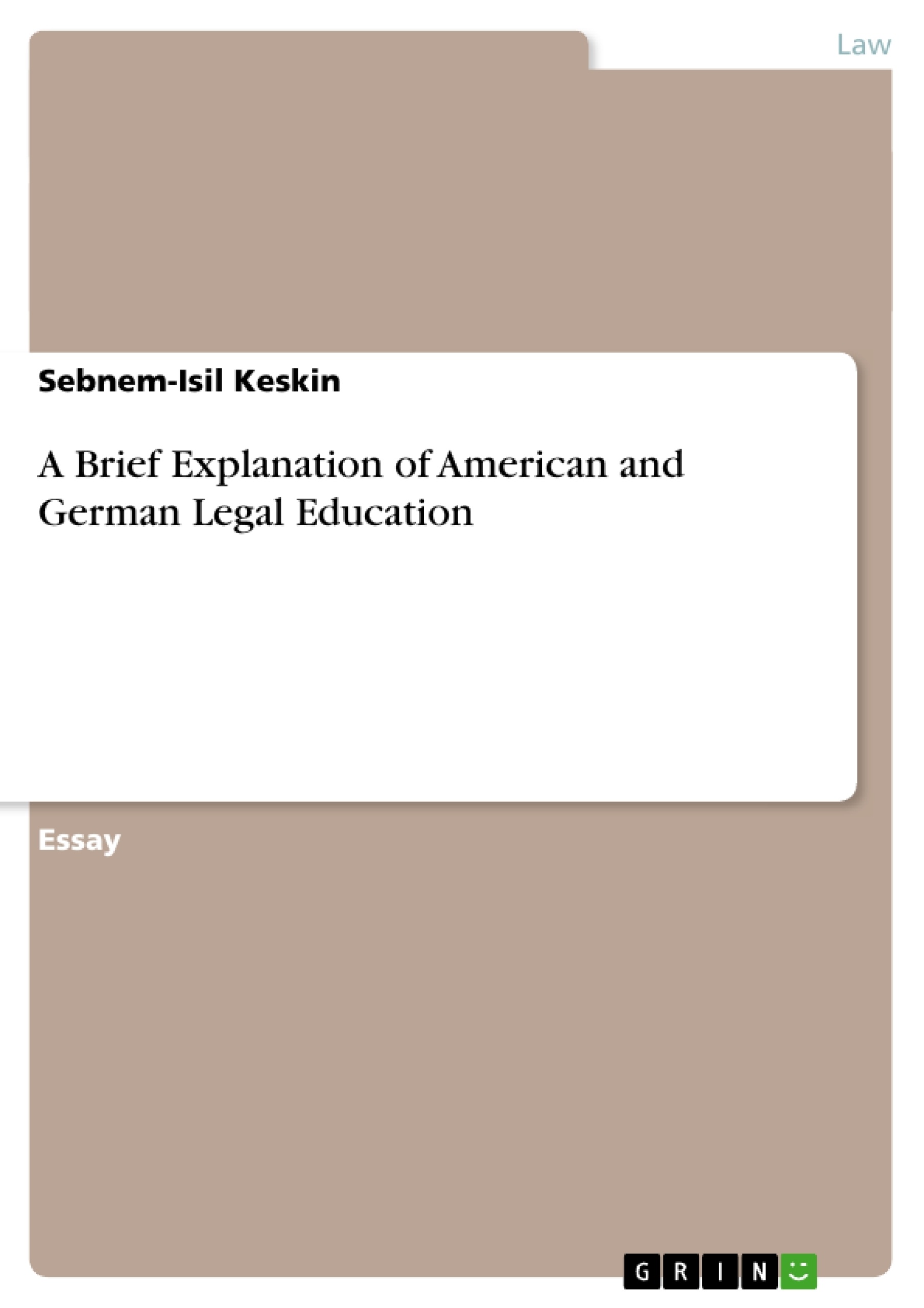The US-American and the German legal education systems stand almost at the opposite ends of a continuum: The US- legal education system is based on the Anglo-Saxon model; whereas the German legal education system is mainly based on traditions dating back to the middle ages. The following pages intend to give the reader a first impression about the main differences in the legal education system of bo th countries, especially of the licensing requirements and a view in the work of an US -american and a german lawyer.
Inhaltsverzeichnis (Table of Contents)
- INTRODUCTION.
- LEGAL EDUCATION IN THE USA
- LAW SCHOOL & LICENSING REQUIREMENTS.
- WORK OF AN AMERICAN LAWYER
- Drafting Documents...
- Negotiating..
- Counseling Clients.
- Litigation.........
- Representing..
- LEGAL EDUCATION IN GERMANY..
- LAW SCHOOL & LICENSING REQUIREMENTS.
- WORK OF A GERMAN LAWYER
- CONCLUSION
Zielsetzung und Themenschwerpunkte (Objectives and Key Themes)
This essay aims to provide a comparative overview of the legal education systems in the United States and Germany, highlighting key differences in licensing requirements and the work of lawyers in each country. It explores the distinctive features of the Anglo-Saxon and Continental legal traditions, examining the historical context and contemporary practices of both systems.
- Comparison of American and German legal education systems.
- Licensing requirements and admission processes in both countries.
- The role and responsibilities of lawyers in the US and Germany.
- The influence of Anglo-Saxon and Continental legal traditions on education and practice.
- Key differences in legal education methodologies and approaches.
Zusammenfassung der Kapitel (Chapter Summaries)
The first chapter focuses on legal education in the USA, outlining the prerequisites for becoming a lawyer. It details the admission process to law school, emphasizing the importance of GPA and LSAT scores. The chapter also describes the three-year law school curriculum, highlighting the case method of instruction used in the Anglo-Saxon system. Finally, it examines the licensing requirements, including the state bar examination and the various components, such as the MBE, MPT, and MPRE.
The second chapter explores legal education in Germany, contrasting it with the US system. This chapter provides insights into the specific requirements and regulations for obtaining a law degree and becoming a lawyer in Germany. It discusses the unique features of the Continental legal tradition, emphasizing the emphasis on legal theory and scholarship.
Schlüsselwörter (Keywords)
The key terms and concepts explored in this essay encompass legal education, licensing requirements, American Bar Association, ABA approved law schools, Law School Aptitude Test (LSAT), Multistate Bar Examination (MBE), Multistate Performance Test (MPT), Multistate Professional Responsibility Exam (MPRE), Anglo-Saxon legal system, Continental legal tradition, case method of instruction, and comparative legal studies.
- Citation du texte
- Sebnem-Isil Keskin (Auteur), 2003, A Brief Explanation of American and German Legal Education, Munich, GRIN Verlag, https://www.grin.com/document/22469



